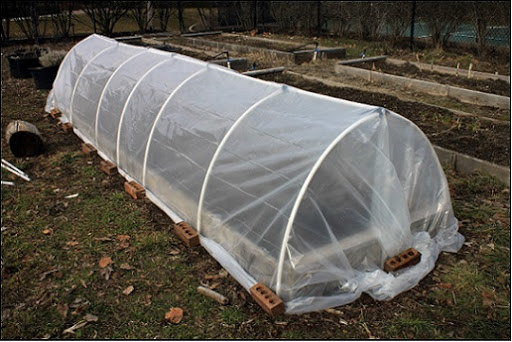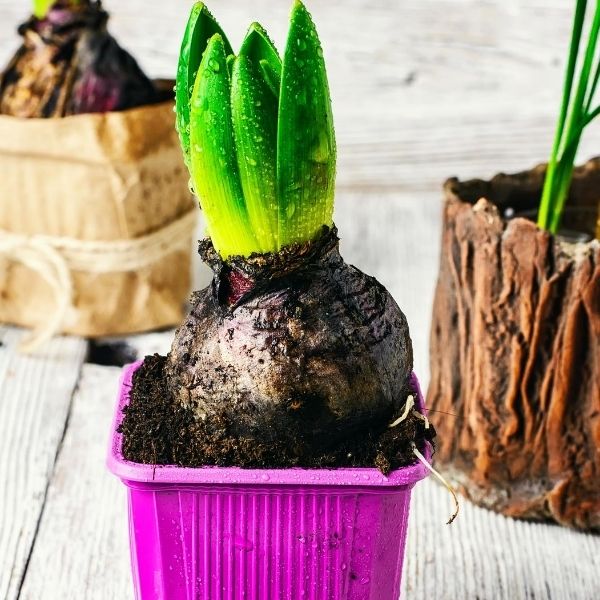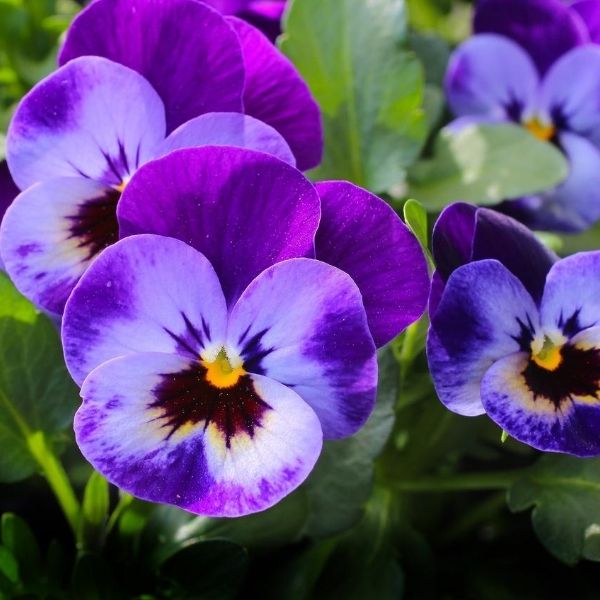End Of Summer Gardening Tips
End of Summer Gardening Tips: Preparing Your Fall Garden
With the summer swelter beginning to subside, we can finally step out into our gardens again and give them new life. Although spring is famous for being the time to garden, fall can be equally as beneficial. You just need to know what to plant and how to prepare your fall garden.
Skip Fertilizing:
It is immensely important that you do not apply fertilizer to your plants in the fall. Plants need to prepare for dormancy in order to endure the cold winters; applying fertilizer will stimulate new growth that will be susceptible, instead of resilient, to these conditions.
Prune:
This task is very important in fall for several reasons. As always, it is necessary to remove dead limbs, flowers, and stems to maintain a clean-cut look to your landscape and encourage a final wave of blooms before winter. Hydrangea heads normally start to dry out this time of year and you may want to remove them.
Similarly, cutting back ornamental grasses will let the new spring growth shine when it starts to pop up.
Do not prune back any plant if you are not sure it will outlast the winter weather. If done too soon, pruning can stimulate new growth that will later perish. If you do choose to prune, wait until after the first frost when your plant is dormant.
Water:
As the summer heat still persists into fall you may need to water your plants more frequently than you would in the spring. For instance, if you normally water your plant every week, you may want to water them every 5 days or so. The summer heat makes the water in the soil evaporate quicker, so the soil dries out quicker.
Weed:
Just like your plants will vigorously grow during this time, so will the weeds. These pesky creepers will compete with your plants for nutrients, sun, and water. If you want to guarantee that your plants will grow in the fall, evict the intruders.
Mulch:
To go along with weeding, adding a layer of mulch around your plants will deter the growth of weeds. In addition, mulch will insulate the soil and protect the roots of your plant from the winter weather so they will survive until spring.
Clear Space:
You may notice that some of your annual plants or vegetables planted in the spring have succumbed to the summer sun and heat.
In order to make room for your fall plantings, remove the plants and as much of their roots as possible. These are perfect additions for compost.
Move Plants Indoors
If you don't happen to live in the sunny spots of zones 9 through 11, now is the time to bring in those plants that you kept outside in for the winter. They'll have their day in the sun when the weather warms, but for now, they are safer in the heat of your home.
Clean Gardening Tools
Since you most likely won't be using your gardening gloves, shears, and trowels any time soon, you should clean them so they last for years to come and do not depreciate over the winter.
When to Plant a Fall Garden:
Now! Preparing and building your fall garden now will give your crops time to fully mature before the first frost comes. It never really is too early for you to begin planting.
When true autumn sets in, the light dims, and the heat slips away. The looming heat and light from the last few days of summer will keep the soil warm enough that the roots of your plants can grow before everything freezes over.
If you think that you have waited too long, there are some fast-growing plants, mostly lettuces, that can be planted later in the fall.
You can extend your harvest time by adding a hoop over your garden as shown below.

What to Plant in a Fall Garden:
Fall is the best time for a vegetable garden. There are numerous crops that actually do better when planted in the fall than they do in the spring. If you delay harvesting, the cooler temperatures will almost act like a refrigerator and your crops will last longer on the plant after ripening.
Here are some of our favorite fall vegetables and the length of time they need to mature:
Salad Greens

These are fast growers, only requiring 8-10 weeks before maturity, even less for some varieties.
At Patuxent we have several options:
Kale, romaine, spring mix, spinach, great lakes lettuce, arugula, and more!
Cabbage

Standard cabbage usually takes 10-12 weeks to reach maturity.
At Patuxent, we have both red and green cabbage plants.
Radishes

Radishes are crisp and peppery. They are very versatile and delicious pickled, in salads, roasted, in teas sandwiches, or on their own!
You can have radishes in your own yard in only 6 to 8 weeks!
Broccoli

Broccoli is a very common member of the cabbage family. It is delicious dipped in ranch, added to chowders, roasted, or steamed.
In your fall garden, it takes 10-12 weeks for the plant to fully establish.
Cauliflower

This annual plant is part of the Brassica family. It is very easy to grow and absolutely irresistible when roasted!
Like broccoli, cauliflower also matures in 10 to 12 weeks.
Onions

Onions, like garlic and leeks, are grown underground while protected in a waxy covering.
They can be planted in the spring, it is recommended to plant them 10 to 12 weeks before the first frost.
Carrots

A favorite of Bugs Bunny and people alike, the carrot is a root vegetable that is snacked on or added to just about any cuisine, even deserts.
In the garden, they take 10 to 12 weeks for the plant to establish.
Beets

Very closely related to Swiss Chard is the beetroot with a deep purple color and impressive nutritional benefits.
These speedy growers only take 6 to 8 weeks to mature!
Brussels Sprouts

This vegetable is in the extended family of cabbages and is most commonly roasted.
Like many other vegetables, they take 10 to 12 weeks to mature.
Swiss Chard

This colorful plant is related to beets and spinach. It is great in soups, casserole, and breakfast foods. Not only is it delicious, but it is also rich in vitamins and minerals!
To allow it to reach maturity, you should plant Swiss Chard 8 to 10 weeks before the first frost.
Turnips

Another popular root vegetable, the turnip is world-famous and can be prepared in an endless number of ways.
In your garden, it will usually need 8 to 10 weeks to develop before the first frost.
Asparagus

This spring vegetable is best planted in trenches in the fall for spring harvest.
To plant, dig trenches and winterize your garden after placing the asparagus crowns in the ground.
Rosemary

This herb has an incredibly aromatic smell and is pretty easy to grow.
Plant it in the ground during the winter, and it will thrive and be ready to harvest in the spring.
Other herbs to plant in the fall for spring harvesting are:
Mint, sage, parsley, chives, thyme, lavender, and cilantro.
Strawberries

In order to get a good crop of sweet strawberries in your first growing season, plant them in the fall.
When spring comes, you should have delectable fruit popping up in your own backyard!
- Salad Greens
- Cabbage
- Radishes
- Broccoli
- Cauliflower
- Onions
- Carrots
- Beets
- Brussels Sprouts
- Swiss Chard
- Turnips
- Asparagus
- Rosemary
- Strawberries
However, fall planting is not limited to vegetable gardening. Planting new purchases in the fall will ensure that they will sprout, bloom, and dazzle in the spring.

Spring Bulbs
Although these plants will not be able to bloom until spring, they require the cold to fully set in and be ready for spring.
Although there is some delayed gratification, the wait will be worth it when these flowers burst out of the ground with pops of color to announce that spring has arrived.
Annuals
Although annuals will not last through the winter, planting these blooms now will give your garden a much-needed boost.
While perennials are preparing for dormancy and their flowers wilt away, annual plants will continue to bring color to your space.
Perennials, Trees, and Shrubs
If your plants try to establish in the peak of summer, there is added stress that may hinder its health. Choosing fall to plant is the perfect, stress-free time for the roots of your plants to really grow and settle.
Then, when spring comes, the initial growth will already be done and your plants will astonish! Just be sure to give your plant enough time to complete this process before the winter comes.
Pansies
These beautiful blooms will persist until the end of the year (when the snow really sets in). If we're lucky enough to have a mild winter, they may even last until spring!

And it's as easy as that! Fall can be the most rewarding time for gardeners. Taking these steps will extend your season of interest through the first frost, and ensure that your garden will thrive in the spring!
End Of Summer Gardening Tips
Source: https://patuxentnursery.com/blog/end-of-summer-gardening-tips/
Posted by: gentilelovent.blogspot.com

0 Response to "End Of Summer Gardening Tips"
Post a Comment